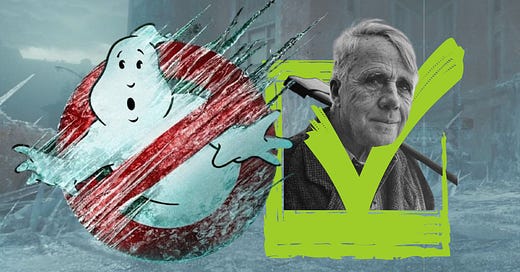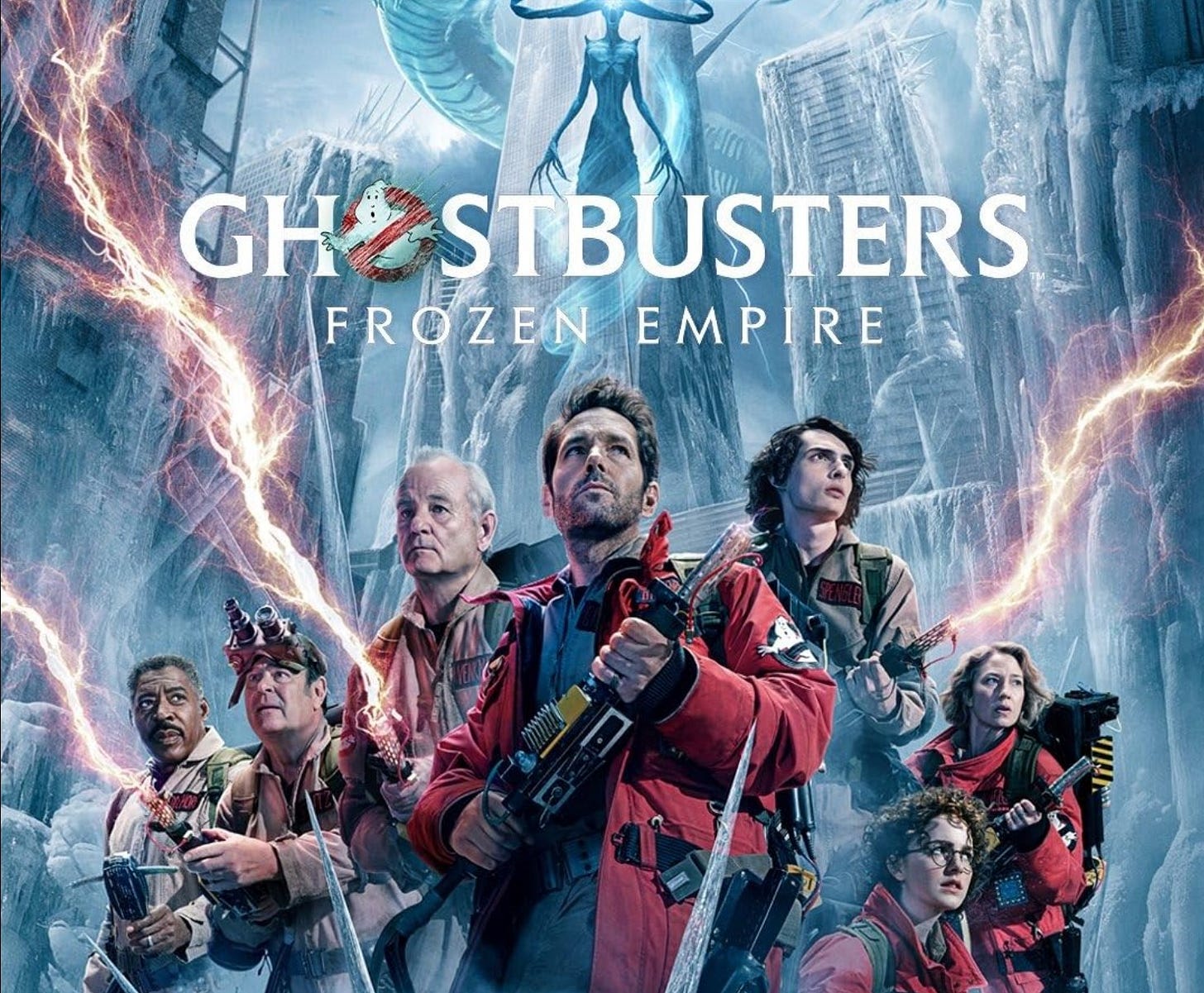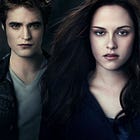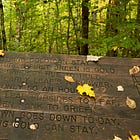Robert Frost's Most Mid Poem Guides Ghostbusters: Frozen Empire
Yeah, it's back. And it's just as sorta good. The poem, that is: the movie's great!
You’re reading a guest post on PopPoetry by Laura Eppinger. Laura Eppinger (she/they) knows that the Jersey Devil is real. Laura’s work has been nominated for a Pushcart Prize as well as Best of the Net. Learn more at lauraeppinger.blog.
Frost Goes Pop
Before the 2024 film Ghostbusters: Frozen Empire begins, this dedication appears on screen:
Some say the world will end in fire, Some say in ice. From what I’ve tasted of desire I hold with those who favor fire. But if it had to perish twice, I think I know enough of hate To say that for destruction ice Is also great And would suffice.
Though it has its critics, this short poem by Robert Frost has been influencing pop culture since it was first published in the December 1920 issue of Harper’s Magazine. While it’s important to note that Frost’s poem pays tribute to poetry that came before, namely “The Inferno” part of The Divine Comedy by 14th Century Florentine writer Dante Alighieri, it has become a cultural touchstone for many others since then.
Fantasy novelist George R.R. Martin has admitted the influence of “Fire and Ice” on his famous Song of Ice and Fire book series, which is more well known as Game of Thrones as adapted for the screen with HBO. “People say I was influenced by Robert Frost’s poem, and of course I was,” Martin has said. “Fire is love, fire is passion, fire is sexual ardor and all of these things. Ice is betrayal, ice is revenge, ice is… you know, that kind of cold inhumanity and all that stuff is being played out in the books.”
This interpretation of the poem’s imagery certainly makes sense when considering the on-screen sex and violence of Game of Thrones. It may be tempting to reduce the poem to shorthand: Fire is desire and ice is hatred. But Frost’s “Fire and Ice” has made many appearances across movies and pop culture since its publication, and they don’t use these metaphors in the same way.
As we’ve covered previously at PopPoetry, the character of Bella, played by Kristen Stewart, also reads this poem in a meadow to the vampire Edward (Robert Pattinson) in the movie adaptation of Eclipse, part of Stephanie Meyer’s Twilight book series. This appearance of the poem plays with the idea that icy cold means hatred. The Twilight series offers many instances of cold vampire skin being noticed by morals, which is frightening to humans. Still, these vampires are so good-looking and attractive to the living that desire wins out over fear of the cold, and fear of monsters.
Ghostbusters: Frozen Empire puts its own spin on the elements of fire and ice—and of the world ending. The Ghostbusters are back in New York City in this film, and the fate of their city hangs in the balance because of the supernatural stakes. (This post doesn’t contain spoilers; previews and movie posters have suggested that the Ghostbusters must face an entity with the power to wield ice.)
Following the imagery of ice and fire to their source in Dante’s Inferno leads to some deeper connections in Frozen Empire. According to Dante, traitors are the worst offenders in Hell. While the ghostbusting cast of Frozen Empire are alive and on earth, themes of betrayal and family loyalty arise. Original Ghostbuster Egon Spengler’s family is centered in the story, with Finn Wolfhard playing Trevor and McKenna Grace playing Phoebe, Egon’s grandchildren.
Throughout the film, Phoebe both insults her mom (Callie, played by Carrie Coon) by suggesting she isn’t smart enough to be a Spengler, and is tempted to betray the Ghostbusters by a possible love interest. The character of Phoebe has a rich arc that points to the origins of the fire and ice imagery, such as forbidden love and the guilt of traitors.
Science Influencing Art
The poetic dedication of Ghostbusters: Frozen Empire is another chapter in the long story of science’s influence on art.
Harvard astronomer Harlow Shapley claimed that a conversation he once had with Robert Frost inspired the poem “Fire and Ice.” According to Shapley, Frost asked him how he predicted the world would end. Shapely answered that either the world will be consumed by the sun (fire), or be spared that fate only to plunge deeper into space without the heat and light of a sun (ice). In this one reading, “Fire and Ice” is a poetic take on astrophysics.
The case could be made that the entire Ghostbusters property is an artistic rendering of science and the lives of scientists. Our original cast of Ghostbusters were Parapsychology professors: though Peter Venkman (Bill Murray), Ray Stantz (Dan Akroyd), and Egon Spengler (Harold Ramis) were filmed at Columbia University, their institution was never named. Winston Zeddemore, played by Ernie Hudson, joined the Ghostbusters later in the film but is said to have a PhD in Philosophy in some of the franchise’s video games. In order to save the day, the Ghostbusters often run afoul of the law, the Mayor, and of course the university.
The most fictional part of Ghostbusters’ science fiction is that when scientists are freed from the constraints of propriety and procedure, they can be joke-cracking heroes with state-of-the-art ghost-trapping technology that just might save the world.
What might happen if we took more of that philosophy to heart? Maybe the world wouldn’t end in fire or ice… maybe it wouldn’t have to end at all.
What did you think of the new Ghostbusters movie? Did you groan or cheer when you read the Frost quote? Do you think it speaks to the film in a different way? Does bustin’ make you feel good? Let us hear from you in the comments!










